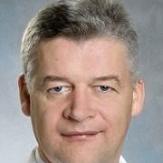Stem Cell Therapy: Wound Healing and Skin Regeneration
A special issue of Cells (ISSN 2073-4409). This special issue belongs to the section "Stem Cells".
Deadline for manuscript submissions: closed (1 December 2020) | Viewed by 39216
Special Issue Editors
Interests: dermal stem cells; skin immunity; ABC transporters; ABCB5
Special Issues, Collections and Topics in MDPI journals
Special Issue Information
Dear Colleagues,
Skin regenerative self-renewal and repair following wounding are thought to be driven by adult stem cells that continuously replenish the epidermis, dermis, and skin appendages. Stem cell loss or dysfunction likely contributes to age-related or inflammatory skin disorders, including declines of skin elasticity and barrier function, hair loss, dysregulation of immune homeostasis, and impaired wound healing. Nonhealing wounds pose a significant health problem in older patients who often also suffer from chronic systemic disorders. While stem cell transplantation carries great promise in the field of regenerative medicine, the precise contributions of stem cell dysfunction to skin aging and inflammation, and hence the potential therapeutic role of stem cells for aging prevention and/or the treatment of wound healing disorders, are currently only beginning to be explored. Additionally, current limitations in isolation of molecularly defined, pure stem cell populations with established roles in skin homeostasis and regeneration represent significant barriers to the design of rational cell-based strategies for skin regenerative disorders. This Special Issue is aimed at presenting cutting-edge research in the fields of skin regeneration, wound healing and stem cells therapy.
We cordially invite you to contribute your original research to this exciting Special Issue of Cells.
Sincerely,
Dr. Markus H. Frank
Dr. Natasha Y. Frank
Guest Editors
Manuscript Submission Information
Manuscripts should be submitted online at www.mdpi.com by registering and logging in to this website. Once you are registered, click here to go to the submission form. Manuscripts can be submitted until the deadline. All submissions that pass pre-check are peer-reviewed. Accepted papers will be published continuously in the journal (as soon as accepted) and will be listed together on the special issue website. Research articles, review articles as well as short communications are invited. For planned papers, a title and short abstract (about 100 words) can be sent to the Editorial Office for announcement on this website.
Submitted manuscripts should not have been published previously, nor be under consideration for publication elsewhere (except conference proceedings papers). All manuscripts are thoroughly refereed through a single-blind peer-review process. A guide for authors and other relevant information for submission of manuscripts is available on the Instructions for Authors page. Cells is an international peer-reviewed open access semimonthly journal published by MDPI.
Please visit the Instructions for Authors page before submitting a manuscript. The Article Processing Charge (APC) for publication in this open access journal is 2700 CHF (Swiss Francs). Submitted papers should be well formatted and use good English. Authors may use MDPI's English editing service prior to publication or during author revisions.
Keywords
- Skin regeneration
- Stem cell therapy
- Dermal stem cells
- Epithelial stem cells
- Skin immunity
- Skin development
- Skin aging







